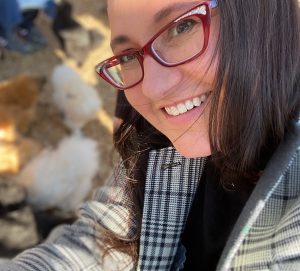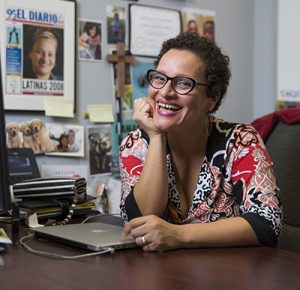CAA News Today
Deadline Extended for Jury Vacancies for Spring, 2021
posted by CAA — June 14, 2021
CAA is extending our call for nominations for jury participation. CAA invites nominations and self-nominations for individuals to serve on our Awards for Distinction, Publication Grant, Fellowship, and Travel Grant juries. Terms now begin August 2021.
Candidates must possess expertise appropriate to the jury’s work and be current CAA members. They should not hold a position on a CAA committee or editorial board beyond May 31, 2021. CAA’s president and vice president for committees appoint jury members for service. Materials are due to CAA by July 14, 2021.
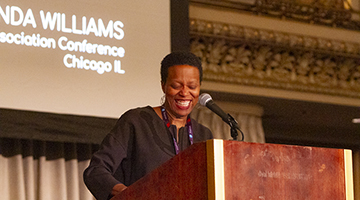
Amanda Williams speaks at Convocation at CAA’s 108th Annual Conference in Chicago
Awards for Distinction Juries
CAA has vacancies in the following juries for the annual Awards for Distinction for three years (2020–2023). Terms begin in July 2021.
- Art Journal Award, one vacancy
- Charles Rufus Morey Book Award for non-catalogue books in the history of art, two vacancies
- Jury for the Artist Award for Distinguished Body of Work, Distinguished Artist Award for Lifetime Achievement, and Distinguished Teaching of Art Award, two vacancies
- Jury for the Distinguished Teaching of Art History Award and the Distinguished Lifetime Achievement Award for Writing on Art, one vacancy
- Distinguished Feminist Awards for Scholars and Artists, two vacancies
- CAA/American Institute for Conservation Award for Distinction in Scholarship and Conservation, one vacancy
Publication Grant Juries
CAA has vacancies on our Wyeth Foundation Publication Grant jury for three years (2021–2024) and the Terra Foundation for American Art Publication Grant jury for one year (2021 –2022).
- Wyeth Foundation Publication Grant in American Art, two vacancies
- Terra Foundation for American Art Publication Grant, three vacancies
Professional Development Fellowship Juries
CAA has vacancies on our Professional Development Fellowship juries for three years (2021–2024). Terms begin July 2021.
- Professional Development Fellowship in Visual Arts, two vacancies
- Professional Development Fellowship in Art History, two vacancies
Travel/Support Grant Juries
CAA has vacancies on our jury for three years (2021–2024). Terms begin July 2021.
- CAA Support Grant in Memory of Archibald Cason Edwards, Senior, and Sarah Stanley Gordon Edwards, one vacancy
How to Apply
Nominations and self-nominations should include a brief statement (no more than 150 words) outlining the individual’s qualifications and experience and a CV (an abbreviated CV no more than two pages may be submitted). Please send all materials by email to Cali Buckley: cbuckley@collegeart.org. Nominations must be sent as a Microsoft Word or Adobe PDF attachment.
For questions about jury service and responsibilities, contact Tiffany Dugan, CAA Director of Constituency Engagement: tdugan@collegeart.org.
Deadline: July 14, 2021
CWA Picks: May 2021
posted by CAA — June 04, 2021
The May Picks from the Committee on Women in the Arts highlight a selection of events, exhibitions and calls for work that include feminist and womxn artists, and address issues about social justice, climate change and the ongoing global pandemic. Several of the exhibits expand and rework traditional narratives of American history, providing a more inclusive account of our country’s past and its current state.
Sonya Clark: Heavenly Bound
April 10 – September 12, 2021
deCordova Sculpture Park and Museum
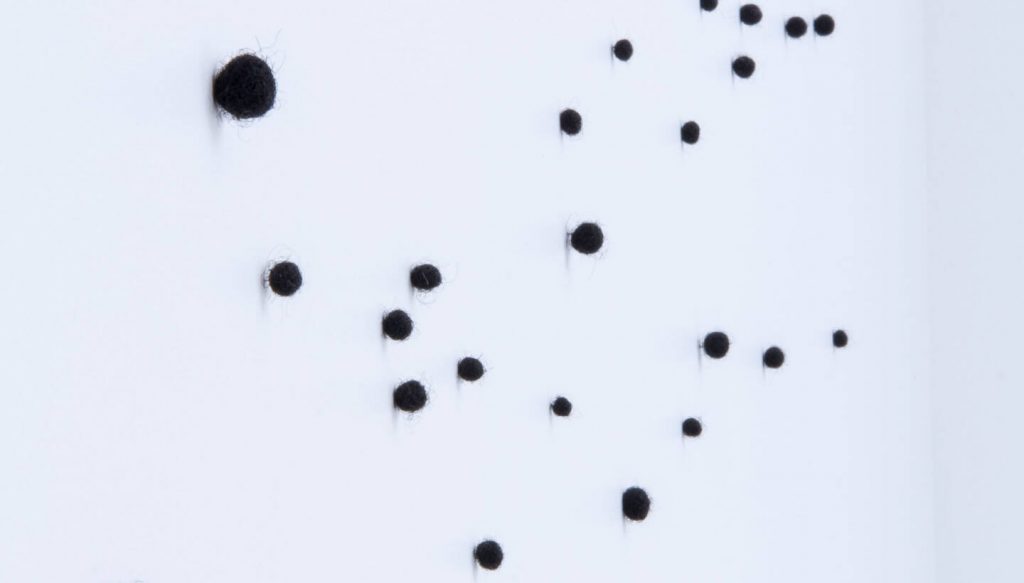
Sonya Clark’s Heavenly Bound, currently on view at the deCordova Museum and Sculpture Park, explores the Underground Railroad and its connection to those seeking freedom throughout history and today. The piece includes a series of large-scale photographs of abolitionists, a night sky made up of the artist’s hair, a parachute installation and a book of cyanotype constellations, which all reference the treacherous journey that self-emancipated Black Americans experienced during their escape.
Personal and Political: Women Photographers, 1965–1985
May 1 – November 28, 2021

Adriana Lestido, Mother and Daughter from Mothers of Plaza de Mayo, 1982. Courtesy Museum of Fine Arts, Boston
Personal and Political: Women Photographers, 1965–1985 includes the work of many well-known American photographers including Diane Arbus and Nan Goldin alongside recently acquired works by lesser-known artists working internationally such as Adriana Lestido and Paz Errázuriz. The exhibit focuses on a specific time in photographic history when women were becoming professional photographers at a higher rate than ever before.
Sharon Harper: Returning Light
April 9 – June 25, 2021
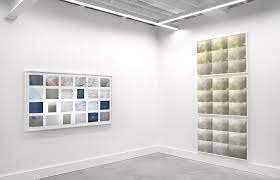
Installation view
Sharon Harper’s Returning Light, currently on view at Rivalry Projects, includes several series of photographs that investigate the cycles of light, providing a more macro view of time and space. Through the imprint of light Harper’s work instills a sense of awe and points toward the changing climate and landscape of our world.
Ground/work
Aug 1, 2020 – Oct 1, 2021
Ground/work includes the installation work of Kelly Akashi, Nairy Baghramian, Jennie C. Jones, Eva LeWitt, Analia Saban, and Haegue Yang. Each of the site-specific pieces considers the relationship between sculpture and nature as well as notions of time, scale and transformation.
Judy Chicago Art Education award
Deadline: June 1, 2021
The Judy Chicago Art Education Award is open to scholars, artists, and educators whose projects engage with the Judy Chicago Research Portal. The award includes a $2,500 prize along with a certificate to be presented in July 2021 in Belen, New Mexico.
Allison Katz: Artery
May 22 – October 31, 2021
Allison Katz’s exhibition, Artery includes paintings, ceramics and posters created in the past 18-months during a time of ongoing national lockdowns. The title of the exhibit speaks to the artist’s interest in networks and systems of connection as well as the spaces in between what is shared and private. Katz’s work will be on display at Nottingham Contemporary through October 2021 and will then be revisualized for the Camden Art Centre in January 2022.
On Hannah Arendt: What is Authority?
April 26 – June 6, 2021
What is Authority? exhibits work from Lili Dujourie, Everlyn Nicodemus, Lerato Shadi and sound artist Laima Leyton. The exhibit is part of a year-long series of shows inspired by Hannah Arendt’s writings about power structures.
Girl You Want
May 1 – August 1, 2021

Genevieve Gaignard, Black is Beautiful, 2016. Installation view in ArtYard’s gallery, 2021. Courtesy of the artist and Vielmetter, Los Angeles, photo by Paul Warchol
Girl You Want, curated by J. Vanessa Lyon, includes the work of Genevieve Gaignard, Julia Greenburger, Jen Liu, Josh Rabineau, Wendy and Beatrice Red Star, Karinne Smith, Ivy Stewart, and María Vargas Aguilar. The exhibit is a broad exploration of what it means to be a girl and traverses the space between girlhood and adulthood.
Promise, Witness, Remembrance
April 7 – June 6, 2021
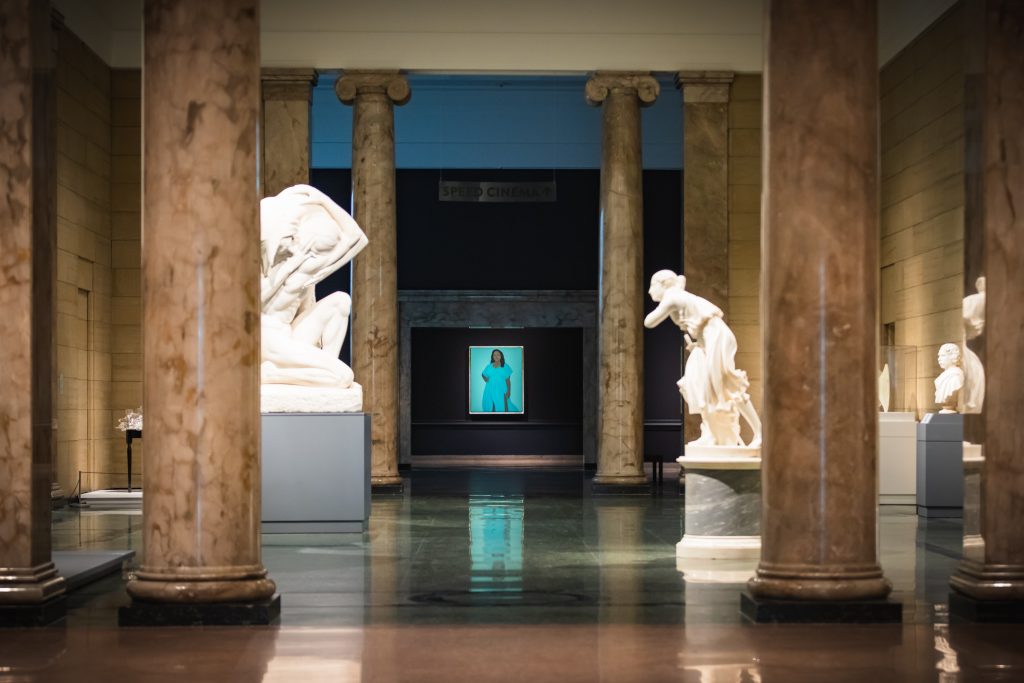
Installation view, Promise, Witness, Remembrance, Speed Art Museum, Louisville, Kentucky. Photo by Xavier Burrell
Promise, Witness, Remembrance was created under the direction of Breonna Taylor’s family along with a committee of artists, mental health professionals and community members. The exhibit pays tribute to Taylor’s life, reflecting on her killing in 2020 and the subsequent protests that took place both locally in Louisville and globally. The artists in this exhibit explore the disconnect between what the American dream has promised and the reality for many of its citizens.
Artist Residency
Deadline: October 1, 2021
Turkey Land Cove Foundation (TLC) offers a residency opportunity in Martha’s Vineyard for women who are in any stage of a project from development to completion. TLC specifically supports applicants who could not otherwise personally finance a residency. Room and board along with travel expenses are provided.
Call for Submissions
Deadline: July 15, 2021
For the 20th annual issue, Mom Egg Review is requesting submissions that respond to the idea of “Mother Figures.” Artwork and Literary pieces including poetry, nonfiction, short fiction, and hybrid works should be submitted by July 15, 2021 for consideration. You do not need to be a mother to participate.
Announcing the 2021 Terra Publication Grant Winners
posted by Allison Walters — April 26, 2021
CAA is pleased to announce the 2021 recipients of the Terra Foundation for American Art International Publication Grant.

This program, which provides financial support for the publication of book-length scholarly manuscripts in the history of American art, is made possible by a generous grant from the Terra Foundation for American Art.
The nine Terra Foundation grantees for 2021 are:
Julie Ault, ed., Hidden in Plain Sight: Selected Writings on Asian American Art by Karen Higa, Dancing Foxes Press
Melissa Dabakis and Paul Kaplan, eds., Republics and Empires: Italian and American Art in Transnational Perspective, 1840-1970, Manchester University Press
Alice Dusapin, Wolfgang Stoerchle: Success in Failure, octopus/Christophe Daviet-Thery
Richard Hertz, Jack Goldstein and the CalArts Mafia, Les presses du réel, translation from English to French
Amy Von Lintel and Bonnie Roos, Expanding Abstract Expressionism: Women Artists and the Middle American West, Texas A&M University Press
Margaretta Markle Lovell, Painting the Inhabited Landscape: Fitz H. Lane and The Global Reach of Antebellum New England, The Pennsylvania State University Press
Friederike Schaefer, Claiming Space(s). Locating Suzanne Harris’ Dance Practice and Ephemeral Installations within New York City in the 1970s, De Gruyter
The International Author Conference Subventions confer two non-US authors of top-ranked books travel funds and complimentary registration to attend CAA’s 2022 Annual Conference in Chicago, February 16-19; they also received one-year CAA memberships.
The two author awardees for 2021 are:
- Alice Dusapin
- Friederike Schaefer
CAA joins 22 other organizations in signing on to a statement by the American Historical Association
posted by Allison Walters — February 24, 2021
CAA joins 22 other organizations in signing on to a statement by the American Historical Association registering concern about a new policy issued by India’s Ministry of Higher Education/Department of Higher Education that “requires Indian scholars and administrators to obtain prior approval from the Ministry of External Affairs if they want to convene online or virtual international conferences, seminars, or trainings.” The AHA states that this policy is likely to “affect a wide range of scholarly exchanges that are critical to the free international expression of ideas” and “strongly maintains that government agencies should not intervene in the content of scholarly exchange.”
Meet CAA’s New Board Members
posted by Allison Walters — February 22, 2021
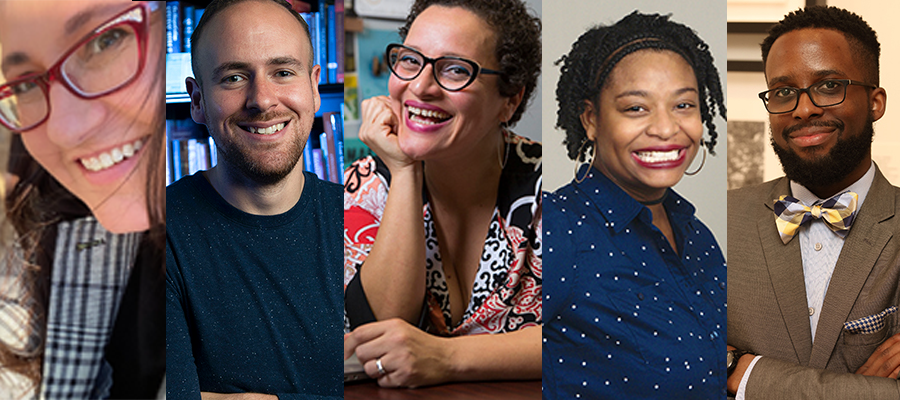
From left to right: Lara Evans, Roland Betancourt, Wanda Raimundi-Ortiz, Kelly Walters, and Kelvin Parnell
The results of the 2021 CAA Board of Directors Election were presented at the CAA Annual Business Meeting on Friday, February 12 at 2:00 PM as part of the 109th CAA Annual Conference.
We are grateful to all the candidates who put forward their names for consideration this year. The 2020-21 Nominating Committee selected six candidates for election for four-year terms and two Emerging Professional candidates, who were eligible for a two-year term. Voters were asked to select four of the six candidates for four-year terms, and one candidate in the Emerging Professional category.
CAA BOARD OF DIRECTORS ELECTION
We congratulate Lara Evans, Roland Betancourt, Wanda Raimundi-Ortiz, and Kelly Walters on their election by CAA membership for four-year terms and Kelvin Parnell on his election for a two-year term as an Emerging Professional board member.
Learn more about the new members:
Interim Director, Research Center for Contemporary Native Arts, Institute of American Indian Arts, Santa Fe, NM
Professor of Art History, University of California Irvine, Irvine, CA
Associate Professor, Studio Art, University of Central Florida, Orlando, FL
Associate Director, BFA Communication Design Program, Parsons School of Design, The New School, New York, NY
EMERGING PROFESSIONALS BOARD OF DIRECTOR CANDIDATES (TWO-YEAR TERM, 2021-2023)
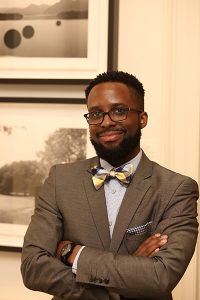
Ph.D. Candidate, Art and Architectural History, University of Virginia, Charlottesville, VA
The CAA Board of Directors is comprised of professionals in the visual arts who are elected annually by the membership to serve four-year terms (or, in the case of the Emerging Professional Board members, two-year terms). The Board is charged with CAA’s long-term financial stability and strategic direction; it is also the Association’s governing body. The board sets policy regarding all aspects of CAA’s activities, including publishing, the Annual Conference, awards and fellowships, advocacy, and committee procedures. For more information, please read the CAA By-laws on Nominations, Elections, and Appointments.
Thank you to all those who voted!
Announcing CAA 2021 Annual Conference Support Grantees
posted by Allison Walters — February 17, 2021
CAA offers Annual Conference grants supporting international members, students, emerging scholars, practitioners, and artists. This year, we offered support grants to attend the 109th Annual Conference, February 10-13, 2021, virtually.
ANNUAL CONFERENCE CAA MEMBER SUPPORT GRANTS
CAA has awarded a limited number of grants to international members, students, emerging scholars, practitioners, and artists who are CAA members participating in the conference to support their ability to take part in the Annual Conference.
2021 Annual Conference Support Grantees:
- Kristina Davis
- Silas E. Fischer
- Maria Garth
- Keith D. Lee
- Mai Yamaguchi
- Xiaojing Yan
SUPPORT GRANTS FOR ANNUAL CONFERENCE REGISTRATION
CAA has awarded a limited number of grants to cover Annual Conference Registration for CAA 2021 to members in need. Annual Conference registration grants are supported by funds raised by the Presidents Council of CAA and the “Pay it Forward” initiative.
2021 Annual Conference Registration Support CAA Student Member Grantees:
- Nicole Cochrane
- Sophia Maxine Farmer
- Alexa McCarthy
- Andrea Morgan
- Lauren Rosenblum
- Sheri Michelle Schrader
- Christine Suzanne Slobogin
- Mariya Tsaneva
2021 Annual Conference Registration Support CAA Member Grantees:
- Chava Krivchenia
- Claudia Marion Stemberger
- Daniela Naomi Molnar
- Dell Marie Hamilton
- Hong Zeng
- Jasmine Graf
- Roma Madan Soni
- Silvia Massa
- Tania Gutierrez-Monroy
ROYAL TALENS NORTH AMERICA – CAA CONFERENCE REGISTRATION GRANTS
For more than 100 years, Royal Talens has been stimulating creative expression by developing high-quality brands and products that inspire artists throughout the world. We seek to initiate and support efforts to increase cultural equity and inclusion in the arts community. We would like to announce the newly created Royal Talens CAA Cultural Equity Grant to provide support for studio art educators of color residing in the US or Canada to attend the national conference in 2021.
2021 Royal Talens North America – CAA Annual Conference Registration Grantees:
- Massa Lemu, Assistant Prof at Virginia Commonwealth University
- Lizzy Martinez, Instructor at University of Missouri St. Louis
- Kirk Maynard, Adjunct Instructor at Drew University, Madison NJ
In Memoriam: Roland Reiss
posted by Allison Walters — January 12, 2021
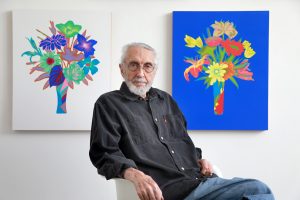
Roland Reiss in front of by Unrepentant Flowers (April 2018), photo by Eric Minh Swenson
We are deeply saddened that Roland Reiss, whose practice spanned Abstract Expressionism, the plastic arts, and representational painting, died on December 13 in Los Angeles at the age of ninety-one.
Jorin Bossen has spoken on the life and career of Roland Reiss:
“Roland saw everything through the lens of art. Even in his last year he produced stacks of drawings each week examining the simple proposition of a circle positioned next to a square. This investigation of thought and possibility extended into the way that he undertook teaching. Teaching was an interactive process—an exchange of ideas. He knew how to point his students in the general direction we needed to be heading. Through new techniques, unfamiliar materials and mediums, seemly-unrelated exercises, and personal chats students often found ourselves in new and unexpected artistic territory. One that we didn’t know existed but filled us with hope, fear, and excitement. For Roland teaching was art.”
CAA 108th Annual Business Meeting Minutes
posted by Allison Walters — December 04, 2020
College Art Association
108th Annual Business Meeting
MINUTES
Hilton Chicago, 720 South Michigan Avenue, Chicago, IL
Part I: February 12, 2020: Convocation, 6:00PM, Grand Ballroom
Part II: February 14, 2020: 2:00PM, Room 4A
Part I: February 12, 2020
I. Welcome
David Raizman, Interim Executive Director, welcomed attendees to the Convocation and to the Association’s 108th Annual Business Meeting.
II. Executive Director’s report
Raizman noted that this year’s Annual Conference has approximately 375 ninety-minute sessions.
This year, in collaboration with the Committee on Women in the Arts, the conference offers a selection of sessions, papers, speakers, and related programming in celebration of the Centennial of Women’s Suffrage in the US. Approximately 50% of the conference’s content is focused on women-centered research, artistic presentations, and discourse. Also, as of this year, the conference program is available only in a variety of digital formats, including the conference app and a downloadable pdf file.
President Jim Hopfensperger was not in attendance, and President-Elect N. Elizabeth Schlatter was ill and could not attend the conference.
III. Awards for Achievement
The awards for achievement were presented by former Presidents: Suzanne Blier, DeWitt Godfrey, Anne Goodyear. The 2020 Professional Development Fellowships in Art History and Visual Art were presented by Raizman.
IV. Keynote address
Raizman introduced Amanda Williams, visual artist and architect, who presented the keynote address.
Part II: February 14, 2020
V. Call to Order
Raizman called the meeting to order.
VI. Approval of Minutes
Raizman asked for a motion to approve the minutes of the meeting held on February 13 and 15, 2019. Cunard made the motion, seconded by Blakely. Motion was approved.
VII. Financial Report
Robert Tofolo, Chief Financial Officer, presented the financial report for the Association for the year ending June 30, 2019. The Association posted an operating deficit of $-167,000, versus a forecasted deficit of $-189,000 and against it original budget of $57,000. The Association continues to work to budget expenses within projected revenue targets. Revenue totaled $3,523,000 against expenses of $3,690,000.
As of June 30, 2019, there were 7,773 (8,435, -8%) individual members. There were 464 (461) organizational members and an additional 617 (651, -5%) subscribers to The Art Bulletin and/or Art Journal through the Association’s co-publisher Taylor and Francis.
The market value of the investment portfolio as of June 30, 2019 was $9,609,945 versus the prior year balance of $9,514,314.
Copies of the audited financial statements for fiscal year 2019 are available and they will be posted as a PDF on the Association’s website.
The Executive Director search is ongoing, conducted by the search committee comprising Directors and staff members.
The number of attendees at this Annual Conference stands at 3,300 as of this afternoon.
VIII. Election of Board Members
Julia Sienkewicz, Vice President for Committees, presented the results of the elections of new members to the Board. The following four members were elected to the Board by the membership to serve a four-year term starting in May 2020:
- Mora Beauchamp-Byrd
- Scherezade Garcia-Vazquez
- Tiffany Holmes
- Nada Shabout
The following member was elected to the Board as an Emerging Professional Director to serve a two-year term starting in May 2020:
- Lara Ayad
IX. Old Business
Raizman called for old business. There was none.
X. New Business
Raizman called for new business. There was none.
XI. Adjournment
Raizman adjourned the meeting.
International News: Letters from the Asia Art Archive UnderLockdown (Part II)
posted by Allison Walters — November 17, 2020
This is Part II of an article that began last week in CAA News. It continues the coverage of life and work at the Asia Art Archive during the COVID-19 pandemic.
Mutual Aid, Cici Wu, Research Assistant, Asia Art Archive, New York
New York declared a state of emergency on March 7, 2020. I couldn’t foresee then that this would be my last chance to be in an art museum for many months. I was looking at the Portrait of America by Diego Rivera in the Whitney Museum, which he painted in 1933 for the Communist New Workers School in New York. The text panel said, “In keeping with the politics of the school, Rivera chose not to celebrate American values but instead to highlight uncomfortable truths about the class struggle and the country’s violence against African Americans.” In 1929, the crash of the US stock market caused many to question a capitalist system that seemed no longer compatible with the country’s democratic ideals. Artists resolved to use their art to effect change. Looking back at this period in history, when Mexican muralists were invited to make artworks by the State, it’s striking how artists were allowed to use their creativity and imagination so freely. They also imbued their art with a social role by depicting the real struggle of workers. It was uplifting.
A month before March 7, a memorial gathering for the Chinese doctor Li Wenliang was quietly held in Central Park (Fig. 1). The event was organized to stand against the further erosion of free speech in Mainland China. The park was not crowded. People were dispersed into smaller groups on a sunny afternoon, with murmurs, sighs, and tears. The flowers and banners carried words from the bottom of people’s hearts. At that moment, there was a hope that a little change could happen this time.
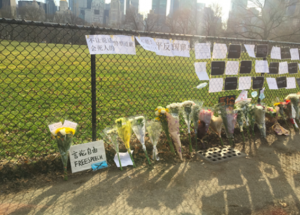
Figure 1. Memorial for Li Wenliang, Sheep Meadow in Central Park, New York, February 9th, 2020. Photo provided by the author.
After March 7, events seemed to accelerate, further unveiling lies, alongside vulnerability, rage and confusion. A wound was suddenly ripped open, resulting in a flowing river of blood. Sad news stories kept coming, one after another, from Italy, Iran, the UK, the Philippines, and the rest of the world. Airlines were collapsing. Small businesses were at risk. Middle-class and working-class people started worrying about their future. All of a sudden, restaurant workers, airline employees, and gig workers were on the verge of being laid off. Immigrants and undocumented residents without families were most at risk. More than ever, we learned that our social welfare was deeply tied to our immigration status in this country. We wondered, how are we going to collectively survive other crises, such as the huge environmental shifts and resulting displacements, that will come in the future?
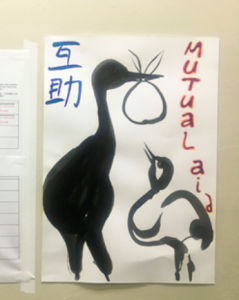
Figure 2. A mutual aid poster on display at 172 Henry Street in Chinatown, New York, April 25th, 2020. Photo provided by the author.
For a short time, New York became a site of discombobulation, isolation, and helplessness. The city was pale and empty. Workers in the arts, who were lucky enough to keep their jobs, started to work from home. Essential workers, including doctors, nurses, delivery drivers, and home caretakers, were getting off from work shattered. After a period of panic, some artists started to break out of their isolation and regather in small volunteer communities, helping food pantries, protesting against evictions, and organizing mask donations, all built upon the principle of Mutual Aid Community Agreements: “We Keep Us Safe” (Fig. 2).
The city began returning, bursting with idealistic energy. Most precious for the Asia Art Archive in America during this time has been the support and care we have been able to provide for each other. Invaluable weekly virtual meetings helped us stay connected and in dialogue, discussing together our changing thoughts throughout this critical time.
Our research collection, the Joan Lebold Cohen Archive Phase II was successfully launched online in the height of lockdown, on April 1. Three years after the launch of Phase I, the trips Joan Cohen took to China from the 1970s–2000s are finally fully available to explore and learn from: 16,453 color photographs of artists, artworks, studios, academies, exhibitions and scenes of everyday life. These images of a past world travelled through the years and arrived at a moment when nations are drifting apart towards isolation. In the midst of reimagining a new spatiotemporal organization of the world, the looks, smiles, and gestures Joan captured on film brought to mind air and light (Fig. 3).
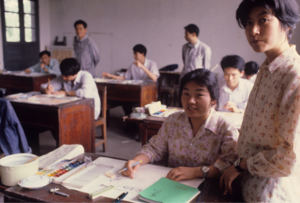
Figure 3. Students in art and design class at Guangzhou Art Academy, Guangzhou, China, 1980. Photo: Joan Lebold Cohen Archive, Asia Art Archive, NY
In Beijing and Hong Kong before returning to New York in February, I was saddened to have witnessed the virus hitting the collective body multiple times. Working through the Joan Lebold Cohen Archive was a healing process, to imagine myself traveling in time and giving light to the gaps of multiple pasts. I want to end here with a quote from the essay Solidarity/Susceptibility by Judith Butler (Social Text, 2018), from her remarks on José Muñoz, the Cuban American scholar of performance and queer studies who died in 2013, as an inspiration to think about archives and the new imaginary: “The potentialities that appear as rips and tears in the otherwise seamless future of no future for those abandoned by progress are immanent and furtive possibilities within the present, indicating that this time is also another time, and always has been; it opens toward a past and a future even when, politically, the force of oblivion seeks to cover over those very openings.”
Erasures and Experiments: The COVID-19 Story in India, Noopur Desai, Researcher, Asia Art Archive, India
Today, we are experiencing an unprecedented moment as we brave the COVID-19 crisis across the world. In India, the situation is complex, similar to many parts of the world, bearing multiple strands, with implications for various aspects of our lives. When the pandemic hit India in March of this year, though early cases were found in January, the country was going through a massive political movement demanding democratic constitutional rights. The announcement of a sudden lockdown across the country on March 22 resulted in the suspension of all social gatherings including, most importantly, the ongoing nationwide sit-in protests against the Citizenship Amendment Act and the National Register of Citizens in various cities and towns.
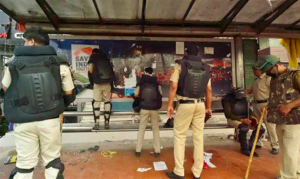
Figure 1. Graffiti and artworks at protest sites, removed by the police during the lockdown, “The Logical Indian,” March 27, 2020. Photo: Hindustan Times
In the midst of panic and uncertainty in conjunction with the mismanagement of the crisis, the previous two months began to appear a distant past with the erasure of politics and the transformation of public space during the lockdown. In effect, the public space was rather transformed, with images of a mass exodus as hundreds of thousands of migrant workers journeyed home from big cities after the closing down of markets, manufacturing units, and various laborer jobs. Combined with a sense of amnesia brought on by the spectacle surrounding the pandemic, the government actions (mis)used the situation to crackdown on dissenting voices, either by arresting social and political activists, defacing artworks and graffiti at protest sites (Fig. 1), or by exercising certain restrictions on media. Taken together these actions have highlighted the systemic inequality and repressive nature of the current regime.
Surrounded by this grave situation, various arts organizations, artists, and museums have had to reconfigure themselves. Several exhibitions and programs were canceled or postponed, and young arts practitioners moved back to their birthplaces or are struggling to survive in metropolitan centers like Delhi or Mumbai. Responding to the severity of the crisis, many arts practitioners and arts organizations have stepped up to create support systems, including grants for young artists, online displays of artworks, and the formation of chain-systems, wherein artists buy each other’s work. The arts community also created online auctions and other fundraising events to contribute to the relief work for migrant workers and other vulnerable populations.
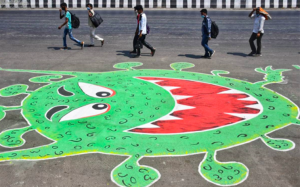
Figure 2. Migrant workers walk in front of a coronavirus graffiti in Mumbai, May 14, 2020. Photo: The Hindu
Physical distancing quickly resulted in digital proximity with the arrival of webinars and online exhibitions organized by museums and galleries, although the graph of the webinars seems to be “flattening” in recent times! However, the digital world has become an intrinsic part of our lives, whether it is through virtual studio visits, webinars, and simulated gallery tours or by creating online resources for teaching and learning. In terms of art education, studio-based practice has been replaced by experimentation with the digital, though only at a few schools, as most of them do not have the resources to run online programs. Nevertheless, there have been important instances where students have used digital platforms to organize their annual exhibitions, which are required for graduation, and which for the most part have not been able to take place physically. Though physical space is crucial in contemporary art practice, this intense effort to use alternative platforms has certainly paved the way for forming new aesthetic possibilities.
While we all are grappling with this strange time, at Asia Art Archive in India we continue building our online research collections and shaping new projects. As an online platform, we have been able to continue several aspects of our work by sharing digital resources and programming via our website. Despite this, we have also faced challenges in light of changing situations. Though our collections are available online, the groundwork to build those collections requires in-person visits to archives and libraries, access to review personal archives, resources to digitize the documents, and programs to introduce the archival collections; most of these activities have been brought to a halt for now. In the meantime, we are maintaining our spirits by planning and carrying out whatever aspects of our work we can, keeping in mind the need for physical distancing. At the same we are recalibrating our working methods as we venture into the “new normal.”
New in caa.reviews
posted by CAA — January 11, 2019
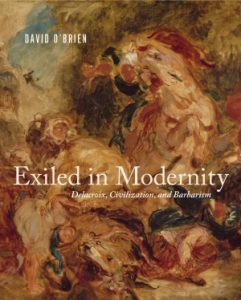
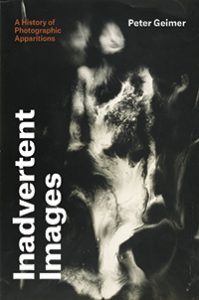 Jordan Bear reviews Inadvertent Images: A History of Photographic Apparitions by Peter Geimer. Read the full review at caa.reviews.
Jordan Bear reviews Inadvertent Images: A History of Photographic Apparitions by Peter Geimer. Read the full review at caa.reviews.
Nina Athanassoglou-Kallmyer writes about Exiled in Modernity: Delacroix, Civilization, and Barbarism by David O’Brien. Read the full review at caa.reviews.



